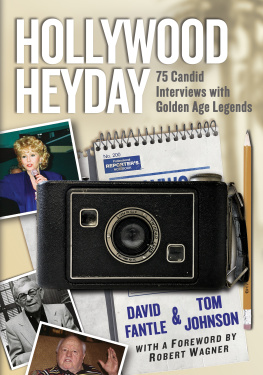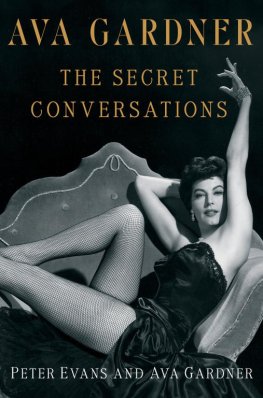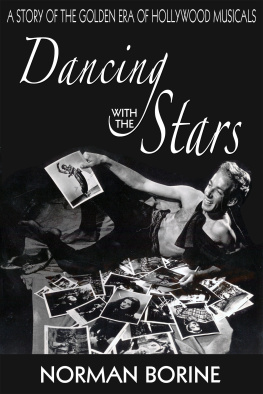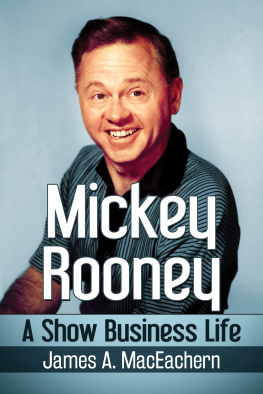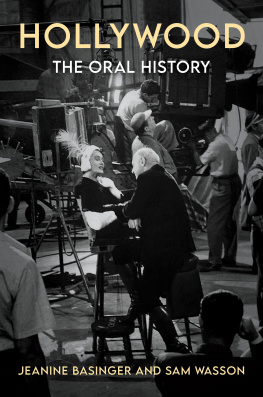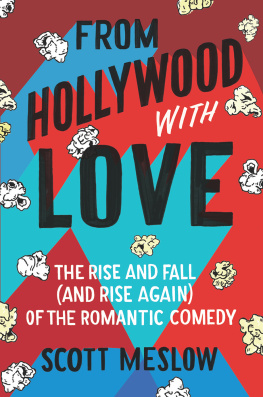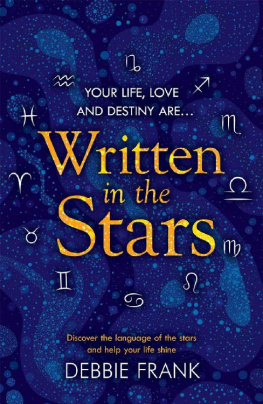
Hollywood Heyday
75 Candid Interviews with Golden Age Legends
DAVID FANTLE and TOM JOHNSON

McFarland & Company, Inc., Publishers
Jefferson, North Carolina
LIBRARY OF CONGRESS CATALOGUING DATA ARE AVAILABLE
BRITISH LIBRARY CATALOGUING DATA ARE AVAILABLE
e-ISBN: 978-1-4766-3283-4
2018 David Fantle and Tom Johnson. All rights reserved
No part of this book may be reproduced or transmitted in any form or by any means, electronic or mechanical, including photocopying or recording, or by any information storage and retrieval system, without permission in writing from the publisher.
Cover design by Dan Augustine; cover photographs David Fantle and Tom Johnson
McFarland & Company, Inc., Publishers
Box 611, Jefferson, North Carolina 28640
www.mcfarlandpub.com
For Fred and Gene
Its totally impossible to break into showbiz, but someone does it every day.
Fred de Cordova, producer of The Tonight Showstarring Johnny Carson, Interview at NBC, summer of 1981
Foreword
by Robert Wagner
What audacity!
And I say that with admiration. These two guys from Minnesota have accomplished something that might be unique, given the fact they were just out of high school when they started interviewing immortal stars of the Golden Age of Hollywood; men and women that lit up our screens for decades with great performances.
The guys are too modest to crow about their achievements. So let me, by proxy, do it for them.
Dave and Tom werent just a couple of nervy 18-year-olds when they made that first trip to see Fred Astaire and Gene Kelly back in 1978. They had resolve and determination and werent content, like most people would be, to just see old movies and write fan letters. Dont get me wrong; thats perfectly fine (I get heartfelt fan mail each week), but they took it one giant leap furtherthey sought out and visited the stars on their home turf and got it all down on tape and in their notebooks.
Millions of people from throughout the world worshipped (and with good reason), the likes of Astaire, Kelly, James Cagney, Lucille Ball and Gregory Peckbut no one else, to my knowledge did what these guys didhopped a plane from Minnesota to Hollywoodand captured an intimate and personal side of them that few have captured in print before.
These are candid interviews with many stars that rarely, if ever, really opened up. Somehow Dave and Tom got them all to open up and the result is always informative, enlightening and often very funny.
Some of the people profiled in these pages have been in my heart for years as I was fortunate to work with quite a few of them and call them my dear friends. To this day Im thankful that I was a part of that Golden Age and Im so happy that Dave and Tom have chronicled so well that period in our show business history.
When I received the first draft of their book, I couldnt put it down, and Im sure youll find yourself in the same happy predicament; immersed. But apart from the scintillating stories and wonderful photos they took, at its root, Hollywood Heyday is really a memoir about Dave and Tomnot just what they did, but how they did it. And its been 40 years in the making.
I highly recommend that you take this journey with them and bask in the stories about these irreplaceable stars. I loved this book and I know you will too!
Robert Wagner is an American television and movie star who was a fundamental part of Hollywoods heyday, well-known for his roles in TV series ranging from the classic It Takes a Thief to the popular favorite Hart to Hart. Hes still busy with recurring roles in a variety of popular series such as NCIS and Futurama.
Preface:
Origin Story
Time flies when you live a life that is celebrity adjacent.
It doesnt seem that long ago when we began chronicling Hollywood chiefly through the recollections of the artists who starred, directed, wrote, choreographed or composed musical scores for that eras movies and television shows. But it was long ago, a lifetime ago; 40 years (and counting) now.
Looking back, our predilection for old movies and vintage TV shouldnt have come as much of a surprise; all the signifiers were there, as telling as genetic markers. We loved history and felt mostly out of step with the contemporary stars lionized by our peers in the mid to late1970s. In our view, Peter Frampton or KISS was small potatoes compared to Ella Fitzgerald.
But it was one seminal eventa movie collage of cinematic moments culled from Golden Age filmsthat became the catalyst leading to the stories contained in these pages.
The year was 1974 and Thats Entertainment!, the compilation film of Metro-Goldwyn-Mayer Studios most wondrous musical moments had just opened wide in theaters across the country. A new generation of movie fans that hadnt been born during MGMs heyday could now watch Gene Kelly joyously dancin and singin in the rain, Judy Garland belting out Get Happy, or Fred Astaire and Eleanor Powell whirling around each other like syncopated pinwheels to Cole Porters sublime Begin the Beguine.
To millions of moviegoers, Thats Entertainment! was a revelation; to usa couple of St. Paul, Minnesota teenagersit was galvanizing. Like many kids growing up in the Twin Cities of Minneapolis and St. Paul, we dutifully watched the Mel Jass Matinee Movie on local television in the early afternoons and for years had been treated to campy double-bills like I Was a Teenage Werewolf and The Brain That Wouldnt Die. Entertaining as such B-grade fare could be, it could not remotely be classified as art. Artless was more like it.
So, when Thats Entertainment! opened, our interest was piqued far beyond seeing a few choice snippets from those Arthur Freed Unit productions. We wanted to see the musicalsin their entiretywhich gave birth to the clips. We wanted the main course, not just the appetizer. However, in an era before DVDs, streaming video or even videocassettes, viewing what you wanted when you wanted was, to say the least, problematic.
Undaunted, we formed a film society that shuttled musicals (of our own choosing, of course) to nursing homes in the MinneapolisSt. Paul area. By renting 16-millimeter prints of the movies and then splitting the expense among the venues, we kept costs affordable for the nursing homes that signed on. We dubbed our organization Films on Wheels, which seemed appropriate since most of our elderly audience were on wheels, too.
Later on, at the University of Minnesota, we expanded our hucksterish notion into a new film group (The Song and Dance Cinema Society) with all proceeds, after expenses, donated to the Ronald McDonald House for children with cancer.
Although eventually sated by seeing practically every musical ever made, our interest took a new turn; we wanted to meet some of the leading lights of the films we so admired. By sheer luck, during the last years of the 1970s, many stars from Hollywoods Golden Age were still in the pictureif not exactly making pictures. Whats more, an interview query with a stamped, self-addressed envelope for their reply was often all it took to get an affirmative response in those simpler days.
Just liberated from high school, in the summer of 1978, Fred Astaire and Gene Kelly (after talking it over between them, we always suspected) agreed to sit down and talk with us.
Next page
